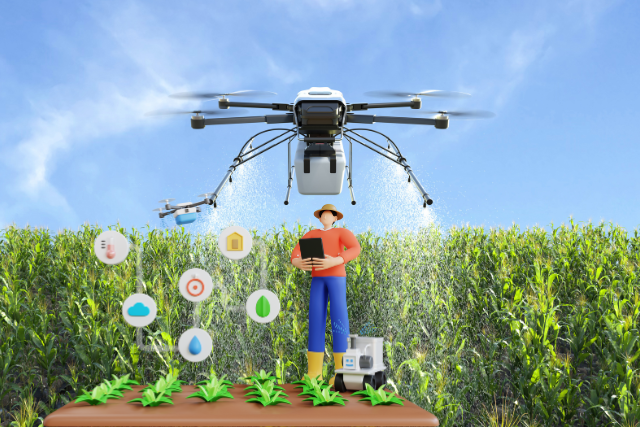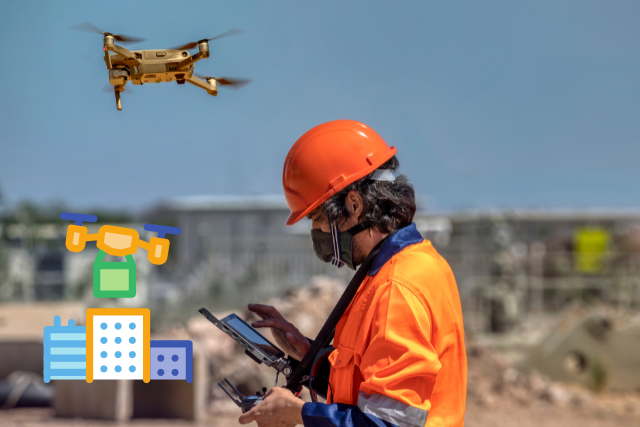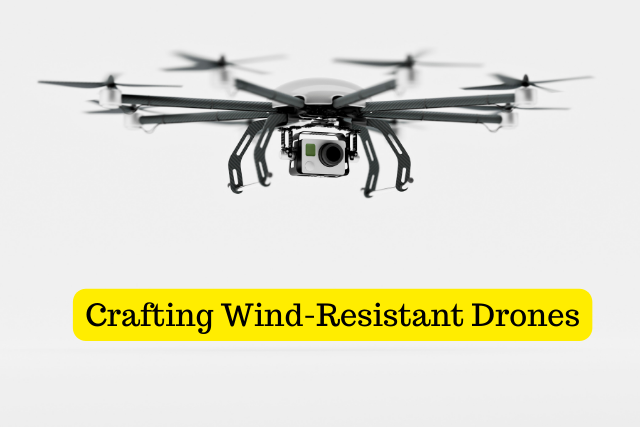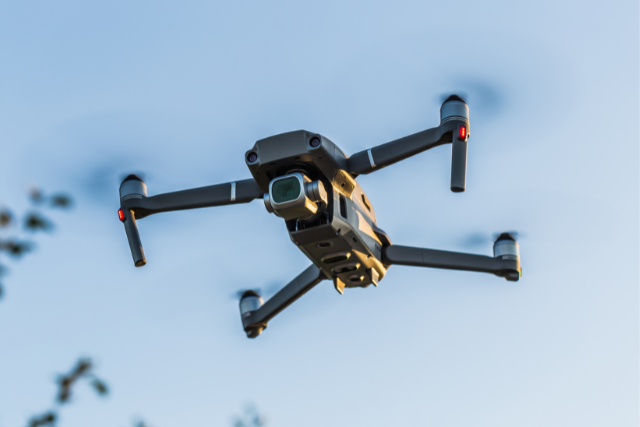Agriculture has continually evolved with technological advancements. Farming practices continue to advance from the introduction of mechanized farming equipment to genetic modification in crops.
One of the most significant technological advancements in recent years is using drones in agriculture. Drones are transforming how farmers manage their fields, enhancing productivity and promoting sustainable practices.
This article explores how drones are revolutionizing agriculture, the benefits they bring, and the future of farming with this innovative technology.
The Rise of Drones in Agriculture
Drones, also known as unmanned aerial vehicles (UAVs), have been used in various industries for years. However, their application in agriculture is relatively recent but rapidly growing. The advent of precision agriculture has spurred this growth, where the goal is to optimize field-level management concerning crop farming.
Drones are essential in achieving this by providing farmers with real-time data and insights about their crops and land.
Benefits of Using Drones in Farming
Enhanced Crop Monitoring
One of the primary benefits of drones in agriculture is enhanced crop monitoring. Traditional methods of crop monitoring involve significant manual labour and time.
Drones with high-resolution cameras and sensors can quickly and efficiently monitor large farmland areas. They capture detailed images and data, allowing farmers to identify issues such as pest infestations, diseases, and water stress early on.
This proactive approach helps in timely intervention, preventing minor issues from escalating into major problems.
Precision Agriculture
Drones play a crucial role in precision agriculture by providing accurate data that helps farmers make informed decisions. They can map fields, monitor crop health, and analyze soil conditions.
This information enables farmers to apply fertilizers, pesticides, and water more precisely, reducing waste and improving crop yields.
For example, drones equipped with multispectral sensors can assess the health of plants by measuring light absorption and reflection, helping farmers target specific areas that need attention. This precision leads to better resource management and higher productivity.
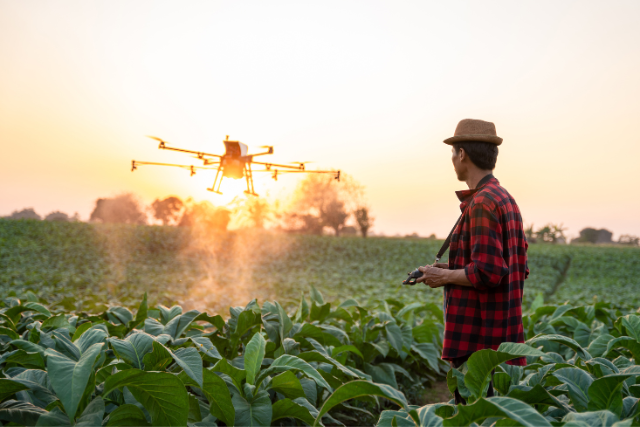
Time and Cost Efficiency
Traditional farming methods often require significant time and labour, especially for planting, spraying, and monitoring crops.
Drones can perform these tasks much more quickly and efficiently. For instance, drones can cover large fields in a fraction of the time it would take for manual labour or traditional machinery.
This efficiency translates to cost savings for farmers, as they can reduce the need for labour and equipment. Furthermore, drones can operate in conditions that may be challenging for human workers, such as extreme weather or rugged terrain.
Sustainable Farming Practices
Sustainability is a growing concern in modern agriculture. Drones contribute to more sustainable farming practices by reducing the need for chemical inputs and promoting precise resource management.
By using drones to monitor crop health and apply treatments only where needed, farmers can minimize the use of pesticides and fertilizers. This not only reduces environmental impact but also lowers production costs.
Applications of Drones in Agriculture
Crop Spraying
One of the most common applications of drones in agriculture is crop spraying. Drones can be equipped with tanks and spraying mechanisms to apply fertilizers, pesticides, and herbicides.
They can fly over fields and precisely target areas that need treatment, reducing the amount of chemicals used and ensuring even application. This method is particularly beneficial for crops that are difficult to access with traditional machinery.
Drones can spray crops at a lower altitude, reducing drift and improving the application’s accuracy.
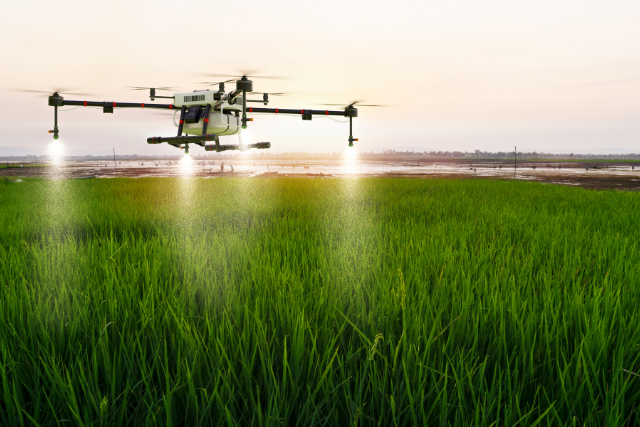
Field Mapping
Drones are also used to create detailed maps of farmland. These maps provide valuable information about soil health, crop health, and topography.
Farmers can use this data to plan planting, irrigation, and harvesting more effectively. For example, drones can generate 3D maps that help farmers understand variations in field elevation, which can impact water drainage and soil erosion.
These maps can also identify areas prone to flooding or other environmental challenges, allowing farmers to take preventive measures.
Livestock Monitoring
In addition to crop farming, drones are also helpful for livestock management. Farmers can use drones to monitor the health and location of their animals, especially in large or remote areas.
Drones with thermal cameras can detect sick or injured animals, allowing farmers to provide timely care. This application is precious for managing herds of cattle or sheep.
Drones can help farmers track the movement and behaviour of their livestock, ensuring that they are grazing in the right areas and not straying too far from the herd.
Irrigation Management
Efficient water use is critical in agriculture, especially in drought-prone regions. Drones can help farmers monitor soil moisture levels and identify areas that need more or less water.
Farmers can optimize water distribution and reduce waste by using drones to assess irrigation systems. This not only conserves water but also improves crop health and yield.
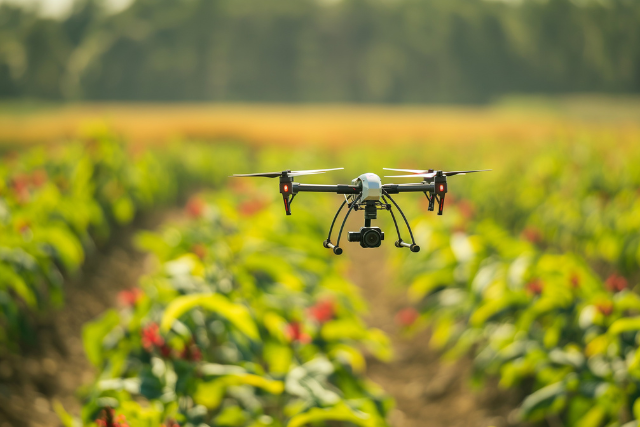
Challenges and Limitations
While drones offer numerous benefits, there are also challenges and limitations to their use in agriculture.
One of the main challenges is the initial cost of purchasing and maintaining drones and the associated technology. Farmers must be trained to operate drones and interpret the data they collect.
There are also regulatory considerations, as the use of drones is subject to government regulations and restrictions. For instance, the Federal Aviation Administration (FAA) has specific rules regarding using drones for commercial purposes in the United States.
Weather Dependence
Drones are heavily dependent on weather conditions. Adverse weather, such as strong winds, rain, or fog, can hinder their operation and data collection. Farmers must plan drone flights carefully, considering the weather forecast to ensure accurate and reliable data.
Battery Life and Flight Time
Another limitation of drones is their battery life and flight time. Most agricultural drones have a limited flight duration, which can be a constraint when monitoring large fields. Advances in battery technology are needed to extend flight times and make drones more practical for extensive agricultural use.
The Future of Drones in Agriculture
The future of drones in agriculture looks promising. Drones are becoming more affordable and accessible to farmers of all sizes. Innovations in drone technology, such as improved sensors, longer battery life, and autonomous flight capabilities, will further enhance their utility in farming.
Integrating artificial intelligence (AI) and machine learning (ML) with drone technology will enable even more precise and efficient farming practices.
Integration with AI and Machine Learning
AI and ML are set to play a significant role in the future of drone technology in agriculture. By integrating these technologies, drones can analyze vast amounts of data and provide actionable insights.
AI-powered drones can predict crop yields, identify potential issues before they become severe, and recommend optimal planting and harvesting times.
This level of precision and foresight can significantly improve farming outcomes. Companies like John Deere are already exploring AI integration to enhance farming practices.
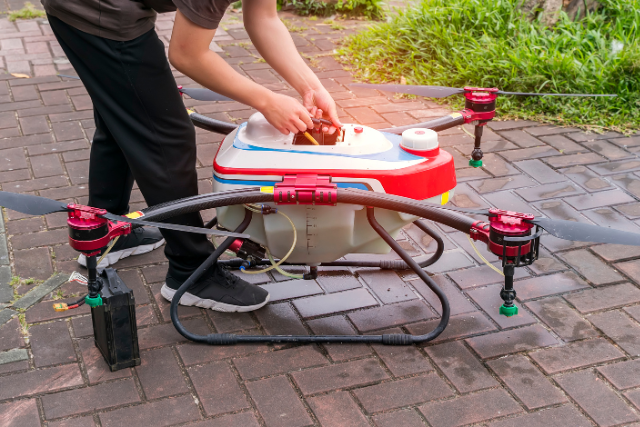
Collaboration with Other Technologies
Drones are not the only technology transforming agriculture. Their integration with other technologies, such as the Internet of Things (IoT), can create a more connected and efficient farming ecosystem.
IoT devices collect real-time weather conditions, soil moisture, and crop health data. Drones can then use this data to perform targeted interventions, such as adjusting irrigation or applying treatments only where needed.
Combining drones and IoT can lead to more competent farming practices and better resource management.
Regulatory and Ethical Considerations
As drone technology becomes more prevalent in agriculture, addressing regulatory and ethical considerations is essential. Governments must establish clear guidelines for using drones in farming to ensure safety and privacy.
Ethical considerations, such as the impact of drones on rural communities and wildlife, must be considered. The responsible use of drone technology can ensure its benefits are realized without causing harm.
Conclusion
Drones revolutionise agriculture by providing farmers with powerful tools to monitor and manage their crops and livestock. The benefits of using drones in farming include enhanced crop monitoring, precision agriculture, time and cost efficiency, and sustainable practices.
While there are challenges and limitations, the future of drones in agriculture looks bright, with advancements in technology and integration with AI and IoT promising even more significant improvements in farming practices.
FAQs
1. How do drones help in precision agriculture?
Drones help precision agriculture by providing accurate data on crop health, soil conditions, and field topography. This data enables farmers to make informed decisions about resource applications, such as fertilizers and water, leading to more efficient and sustainable farming practices.
2. What are the main benefits of using drones for crop spraying?
The main benefits of using drones for crop spraying include precise application of chemicals, reduced chemical usage, and time efficiency. Drones can target specific areas that need treatment, ensuring even coverage and minimizing environmental impact.
3. Are drones cost-effective for small-scale farmers?
While the initial cost of drones can be high, they can be cost-effective for small-scale farmers in the long run. Their efficiency and precision can reduce labour and input costs, leading to overall savings.
4. How do drones contribute to sustainable farming?
Drones contribute to sustainable farming by promoting precise resource management. They help reduce the use of pesticides and fertilizers, optimize water use, and minimize environmental impact, making farming practices more eco-friendly.
5. What are the challenges of using drones in agriculture?
The challenges of using drones in agriculture include the initial cost of equipment, the need for training to operate drones and interpret data, and regulatory restrictions. Additionally, weather conditions can impact drone performance.
6. What is the future of drones in agriculture?
The future of drones in agriculture is promising, with technological advancements making them more accessible and efficient. Integrating AI and IoT, improved sensors, and autonomous capabilities will further enhance their utility, leading to more precise and sustainable farming practices.

